Verso
Unpacking Museum Storage
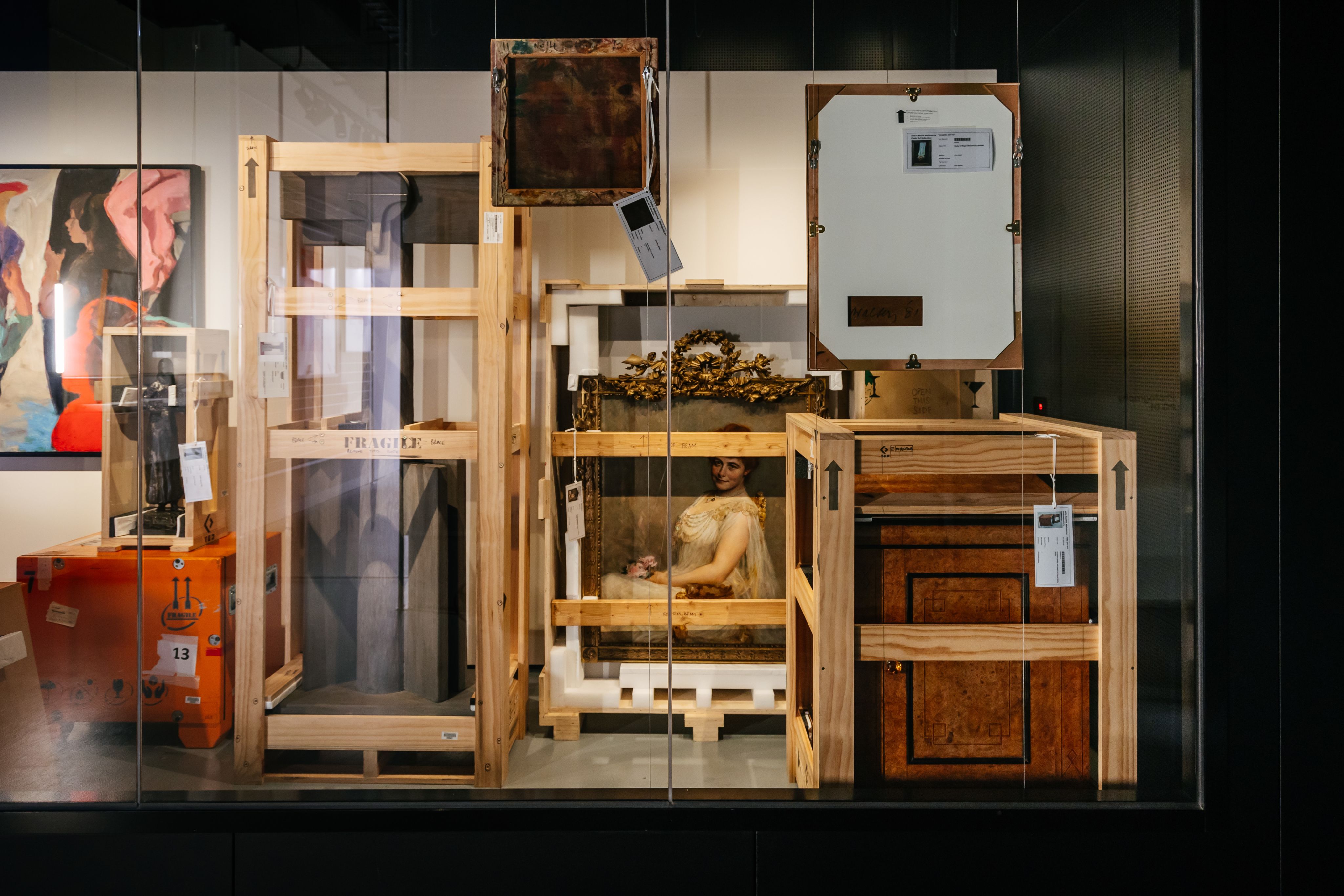
Inside the Arts Centre Melbourne's Collection Store, located within Hamer Hall and beneath Inge King's monumental sculpture Forward Surge, thousands of objects are meticulously stored and cared for by the Collections and Exhibitions team.

Entering through a discreet door, visitors are welcomed by Verso, a display featuring items from both the Performing Arts Collection and the Public Art Collection. The term "verso" originates from the Latin word versus, which means turned or changed.
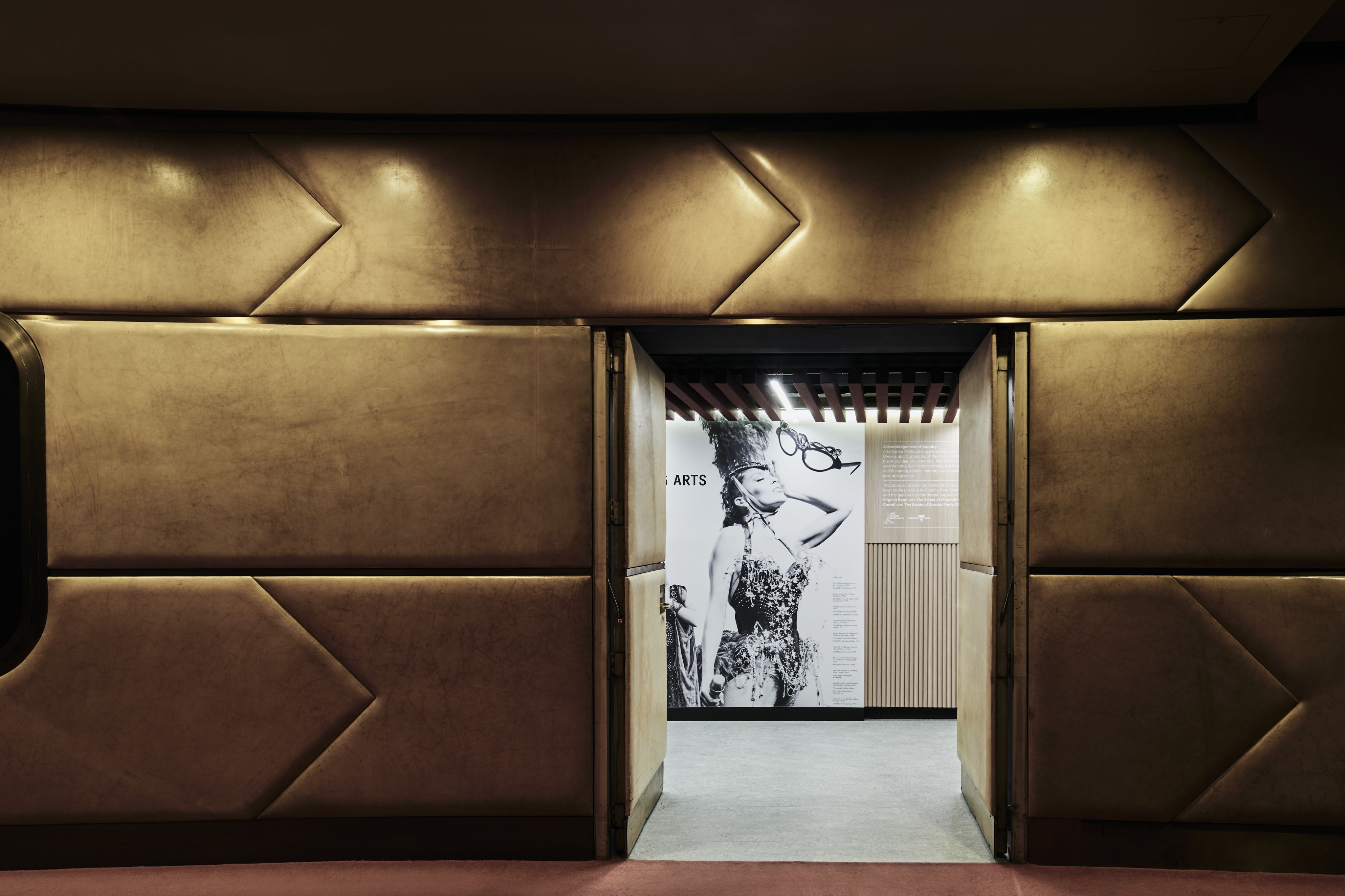
Verso showcases a variety of packing methods and techniques, with artworks and objects arranged within custom-made stillages and crates. Notably, some paintings reveal their backs to visitors.
This display encourages visitors to engage with the artworks and objects from a unique perspective—seeing them as they would appear in storage, rather than in a conventional museum or gallery setting.

Along the glass front of the display case, three suspended paintings are hung to expose the backs of their canvases.
Visitors can clearly see the notations by the artists on the canvas
and hanging fixtures, and the staples used to attach the canvas to the frame.
These verso views offer fascinating insights into an artist’s process, featuring notes and other remnants of creation, or labels that tell a story of the journeys that a work has been on.
Hung along the back wall of the case is Wendy Sharpe's Backstage Artist - Upside Down, 2006 acquired in 2011.
Inspired by the artist's own experiences whilst observing performers backstage at the Sydney Opera House, the painting features an upside-down female figure, possibly Sharpe herself, surrounded by performers, one peeking behind a black curtain, others in performative stances.

Sharpe's vibrant colour palette guides the viewer's eye around the canvas, creating a dynamic connection to the world of the performing arts.
These references to observation, documentation, and behind the scenes, sit as a literal and metaphorical backdrop to this display.
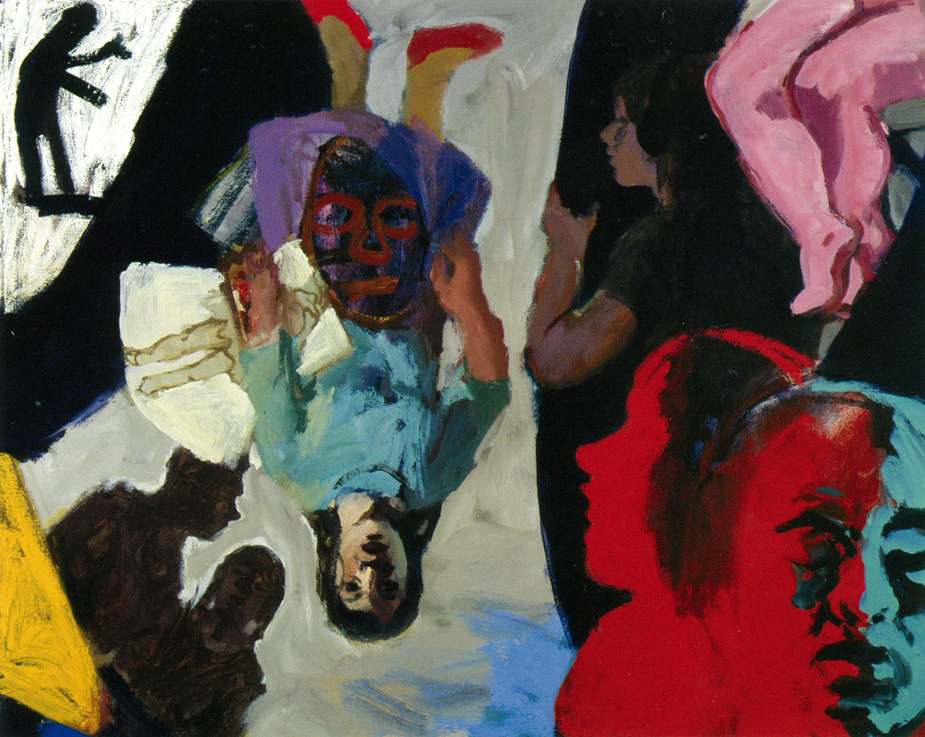
In the centre of the display case, positioned as an anchor point, Clifford Last's sculpture titled Hierarchic Object, 1974 stands securely, housed within a purpose-built stillage. This packing method illustrates the precise packing techniques used for large sculptures.
A stillage is a structure with open sides and is a packing method used for large robust objects that can be stored within an environmentally controlled, clean storage area.
This stillage uses horizontal braces with cushioning foam and clear screw markings for easy removal. The cushioning foam is Ethafoam, a rigid medium density closed cell polyethylene foam, which is chemically inert and non-abrasive. Ethafoam is used extensively as a museum-grade packing material to provide cushioning and shock absorption.
Kiln dried timber is also used in the construction of museum standard stillages and crates to ensure that no insect activity is present within the wood. The use of non-kiln dried wood poses a risk of insect infestation as pest activity may activate at a later date and introduce insect damage to collection items within the storage areas.
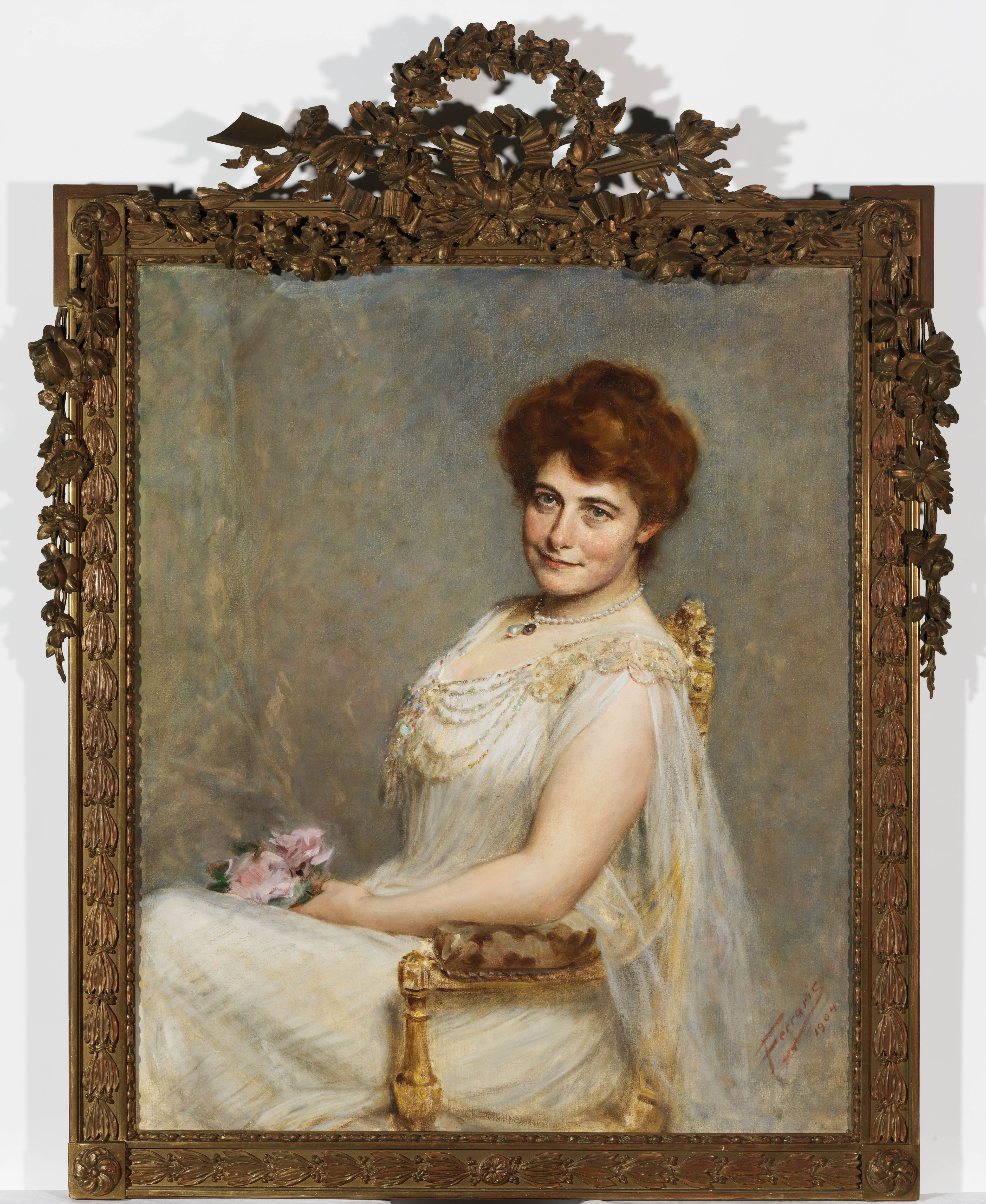
Portrait of Madame Frances Saville, 1904 by Arthur von Ferraris is positioned alongside Hierarchic Object.
It is shown within its purpose-built crate, originally constructed to facilitate the painting’s loan to the National Portrait Gallery in Canberra.
Due to its carved and gilded frame, extra care was taken around the decorative elements, including the use of strategically placed wooden bracings along the front to hold the painting in place without putting excess pressure on the frame mouldings.
Understanding the areas of strength and weakness of an object is critical in providing adequate support at the correct points during the packing process.
Layers of Ethafoam have been added to the bottom of the crate to assist with absorbing vibration during transportation.
Similarly, a portable vanity unit used by Dame Nellie Melba in the 1890's can be seen packed within its storage stillage.
This vanity accompanied Melba from theatre to theatre for use in her dressing room. It was purchased at a Sotheby's auction by the Australian Performing Arts Collection in 1989, and was last displayed in the exhibition Objects of Fame: Nellie Melba and Percy Grainger at the Grainger Museum, University of Melbourne in 2019.


A bronze and silver leaf sculpture titled Colleen Hewett 1971 by Linda Marrinon is displayed within its purpose made enclosed crate.
Small, heavy sculptures are often permanently housed in their crates.
Objects that are difficult to move due to fragility or weight are often crated for this reason.
The crate provides a microclimate and ensures that temperature and humidity remain stable during storage and transportation.
Objects spend most of their lives in storage waiting for the opportunity to be displayed.
It is the role of conservators, registrars, and curators to ensure the longevity of the collection by carefully preserving, cataloguing, and maintaining each item.
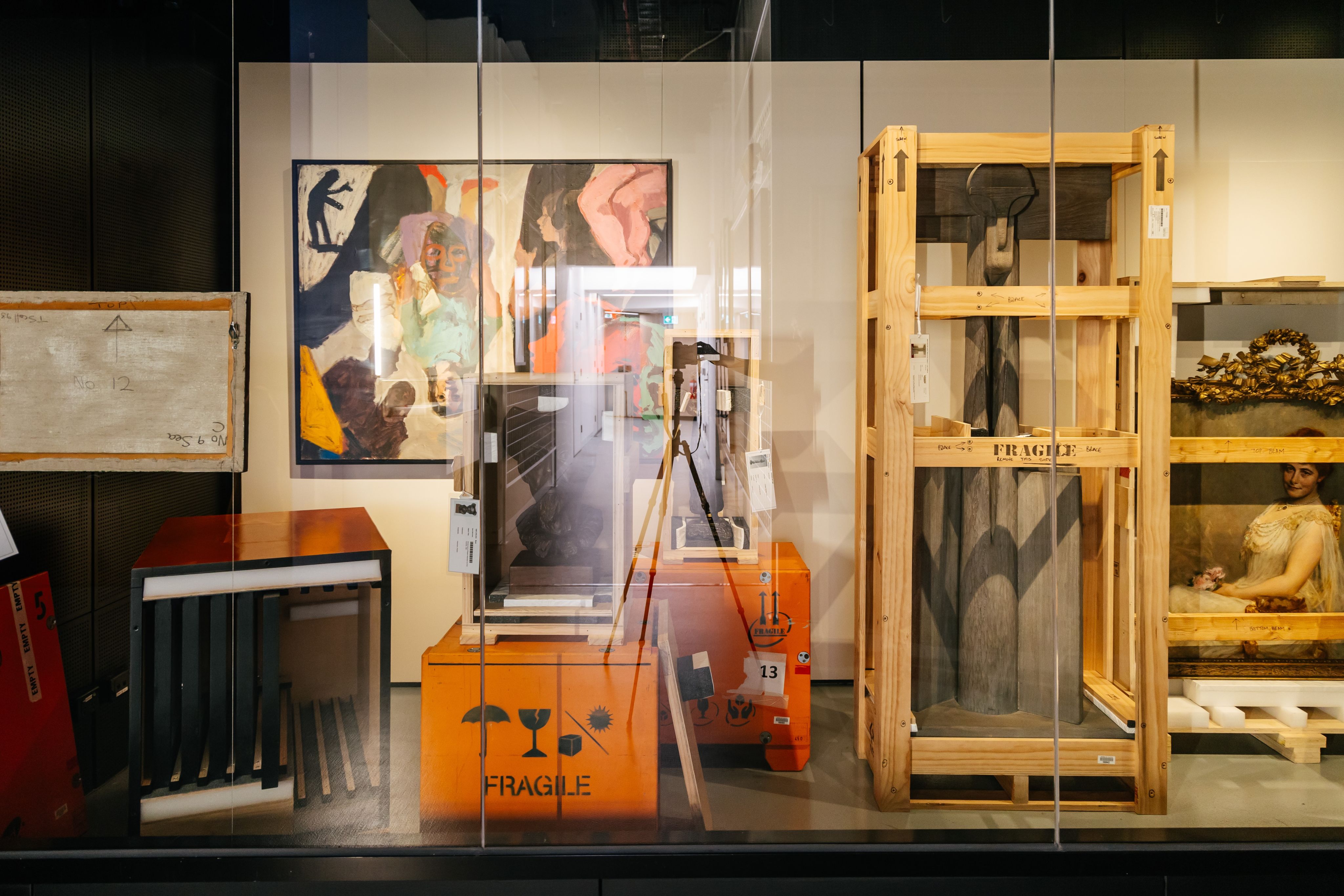
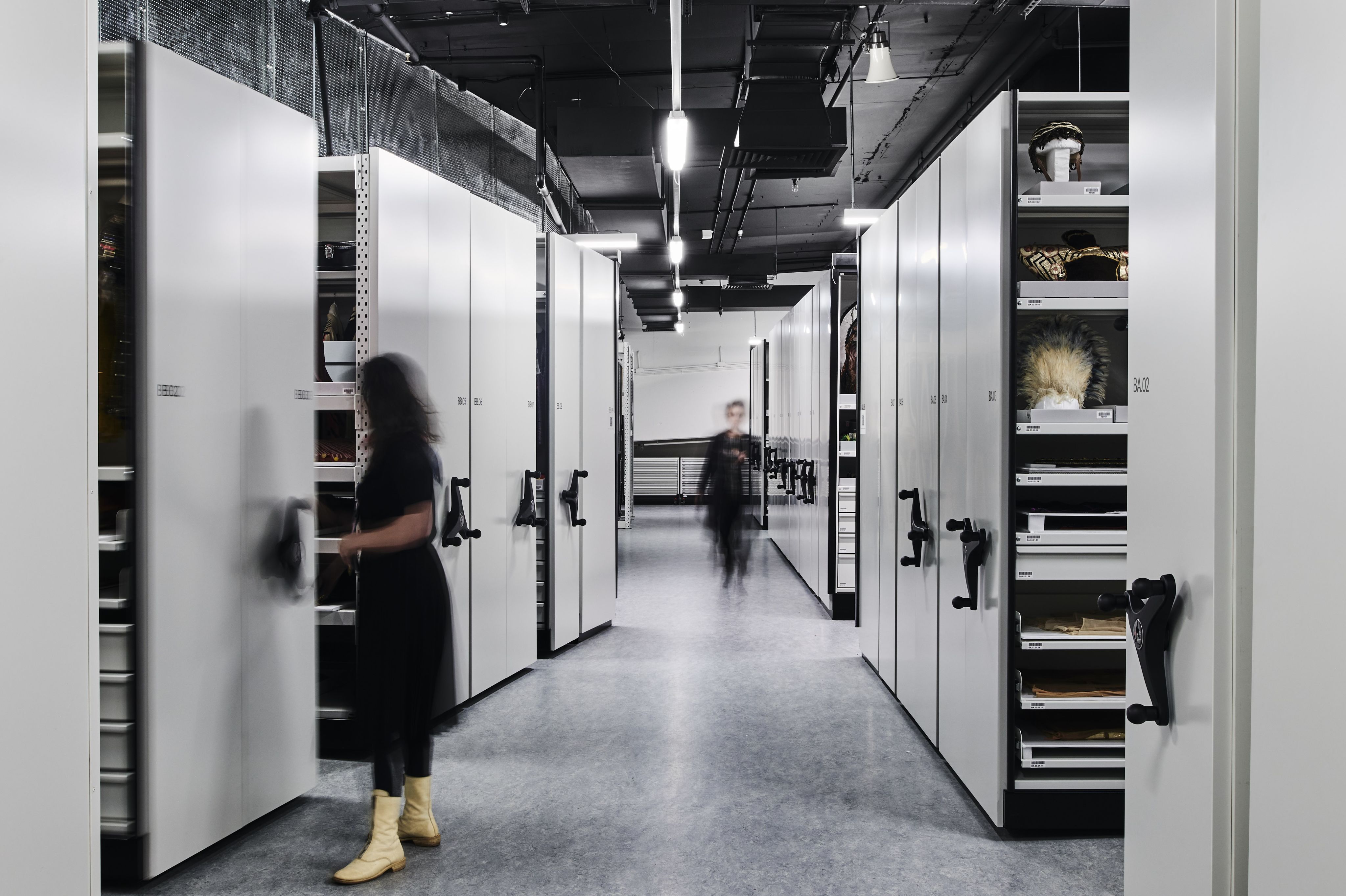
The Collections and Exhibitions team work together to monitor environmental conditions, carefully handle and pack objects, and conduct regular assessments to prevent deterioration.
Through their expertise, they safeguard the cultural heritage held within the collection, ensuring it remains accessible for future generations to experience and appreciate.
Book your behind-the-scenes tour of the Australian Performing Arts Collection here:

Credits
Linda Marrinon
Colleen Hewett 1971, 2009
lost wax bronze sculpture with applied silver leaf finish
Commissioned, 2019. Maxwell & Merle Carroll Bequest
Public Art Collection, Arts Centre Melbourne
Wendy Sharpe
Backstage Artist Upside Down, 2006
oil on canvas
Donated through the Australian Government's Cultural Gifts Program by Wendy Sharpe, 2011
Public Art Collection, Arts Centre Melbourne
Wes Walters
Study of Roger Woodward's Hands, 1981
oil on board
Donated by the artist, 2009
Public Art Collection, Arts Centre Melbourne
Tony Scott
Journey Stone, 1993
mixed media on Japanese kimono fabric
Purchased, 2000
Public Art Collection, Arts Centre Melbourne
Tony Scott
Journey Stone, 1993
oil and bitumen paint on felt
Purchased, 2000
Public Art Collection, Arts Centre Melbourne
Clifford Last
Hierarchic Object, 1974
painted pine and jarrah
Purchased, 1975. William Angliss Art Fund
Public Art Collection, Arts Centre Melbourne
Arthur von Ferraris
Portrait of Madame Frances Saville by Arthur von Ferraris, 1904
oil painting
Bequest of Peter H. Altmann and Edith M. Altmann, 2011
Australian Performing Arts Collection, Arts Centre Melbourne
Diana Hunt
Bronze bust of Robert Helpmann as Don Quixote, 1981
Transferred from the Dennis Wolanski Library, Sydney Opera House, 1997
Australian Performing Arts Collection, Arts Centre Melbourne
Portable vanity unit used by Dame Nellie Melba, c.1895
Purchased, 1989
Australian Performing Arts Collection, Arts Centre Melbourne
All display photography by Jason Lau
© Copyright Arts Centre Melbourne 2025. All rights reserved.
Arts Centre Melbourne have used reasonable endeavours to identify the owners of all copyrighted materials.
If you have any queries, please contact: researchservice@artscentremelbourne.com.au






